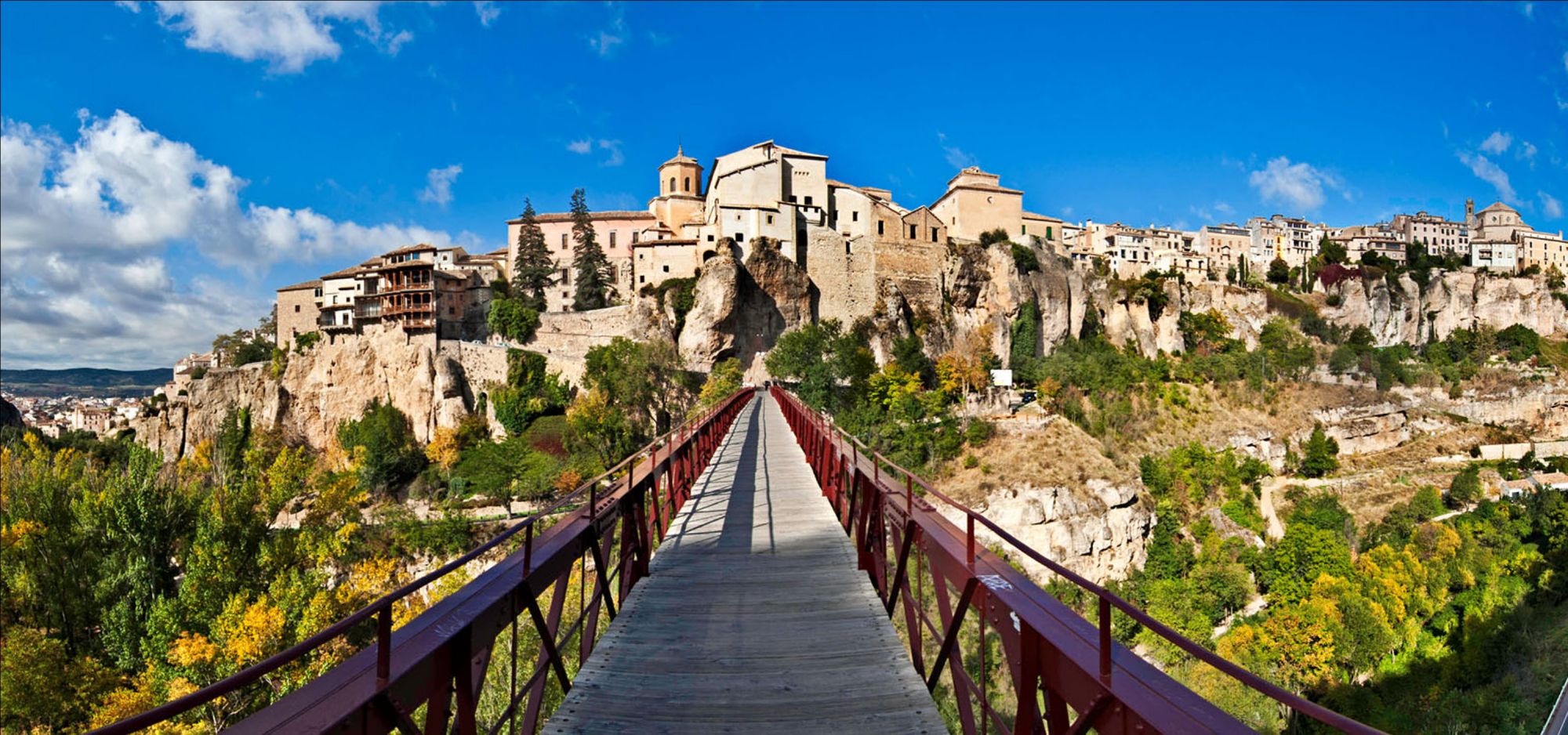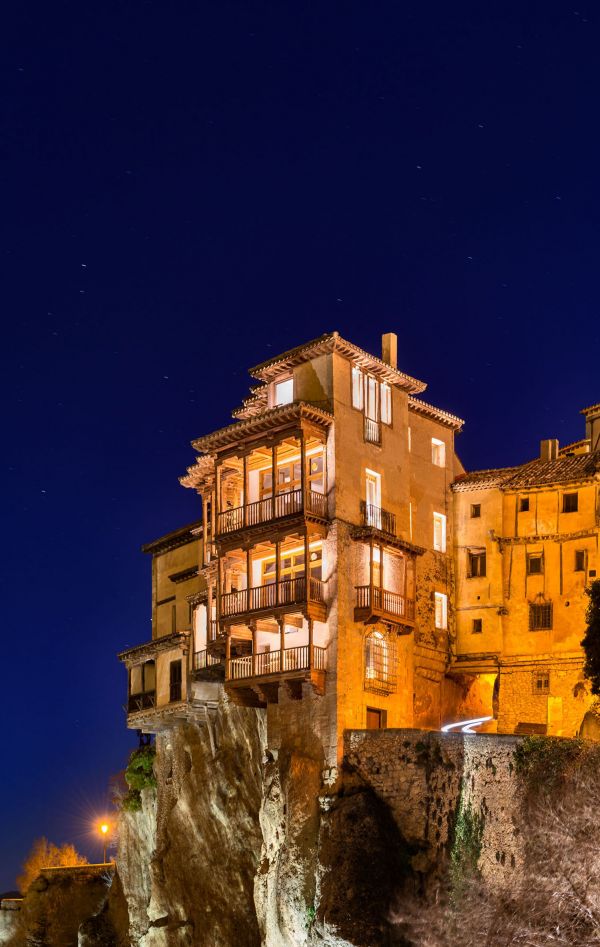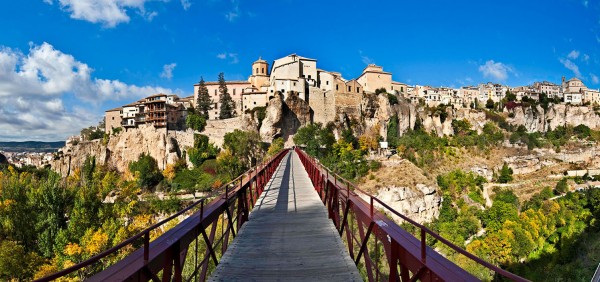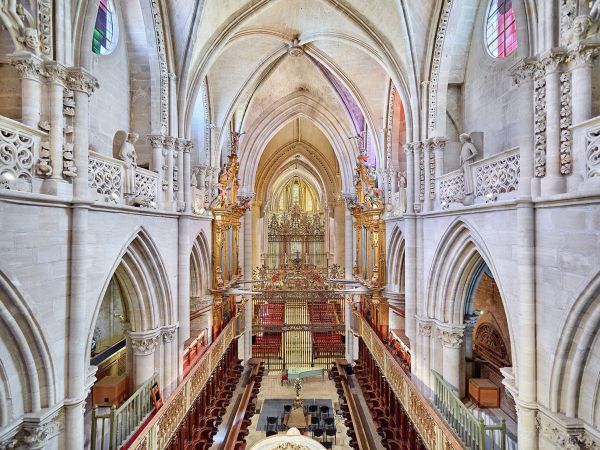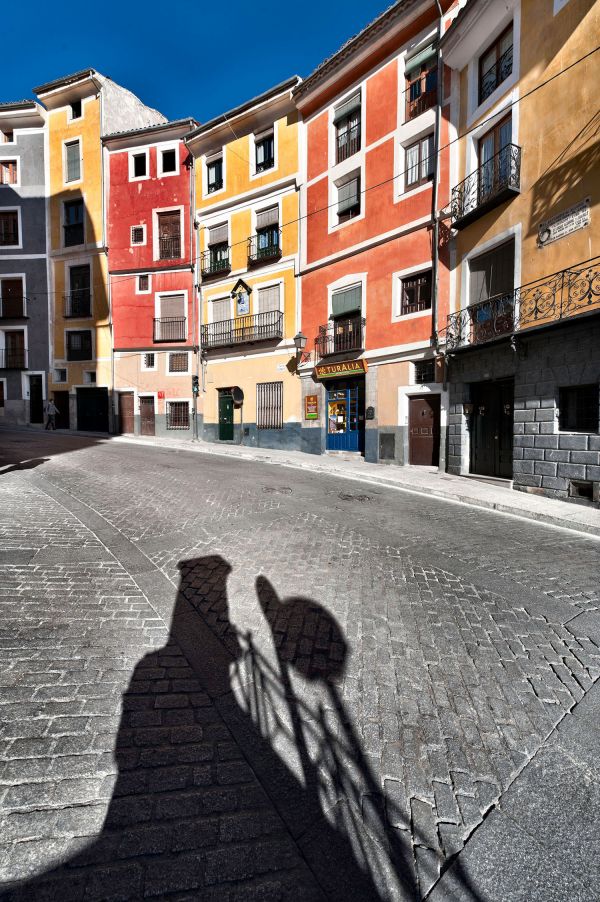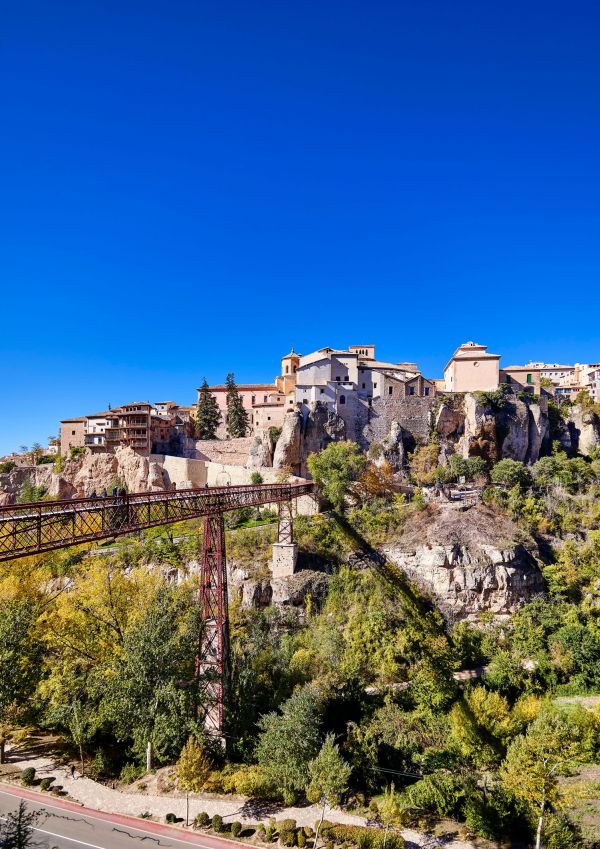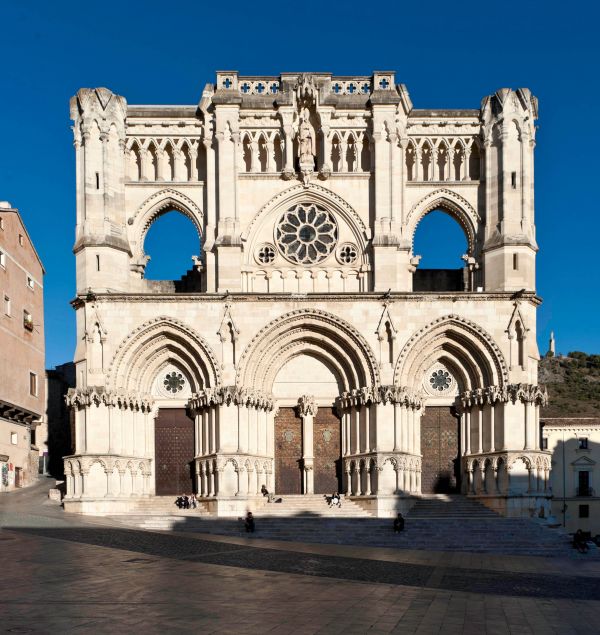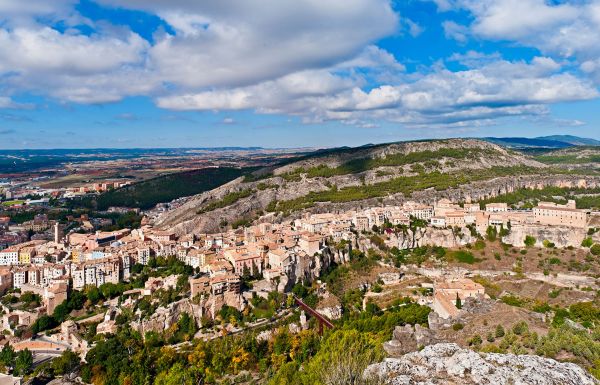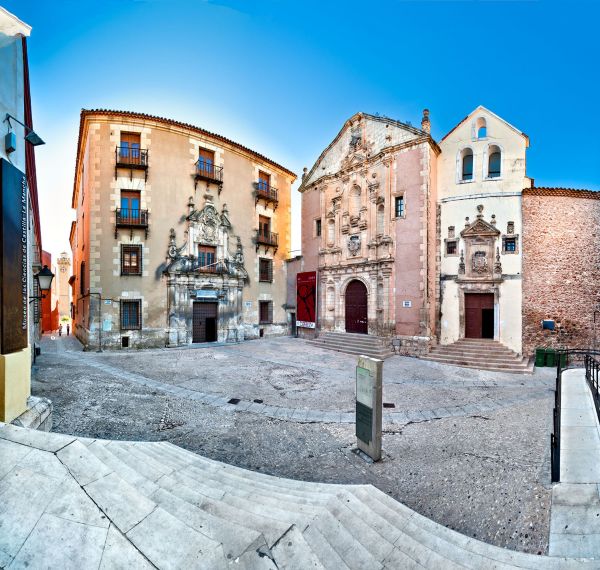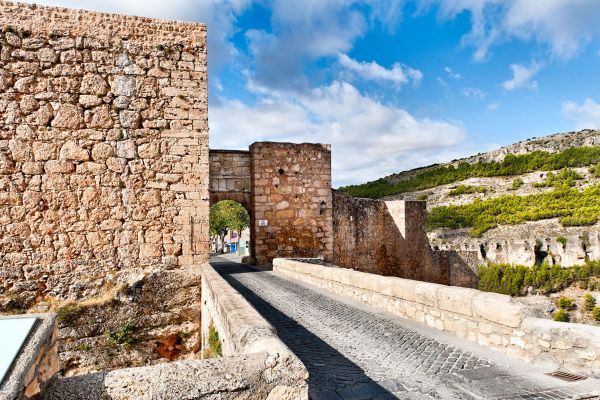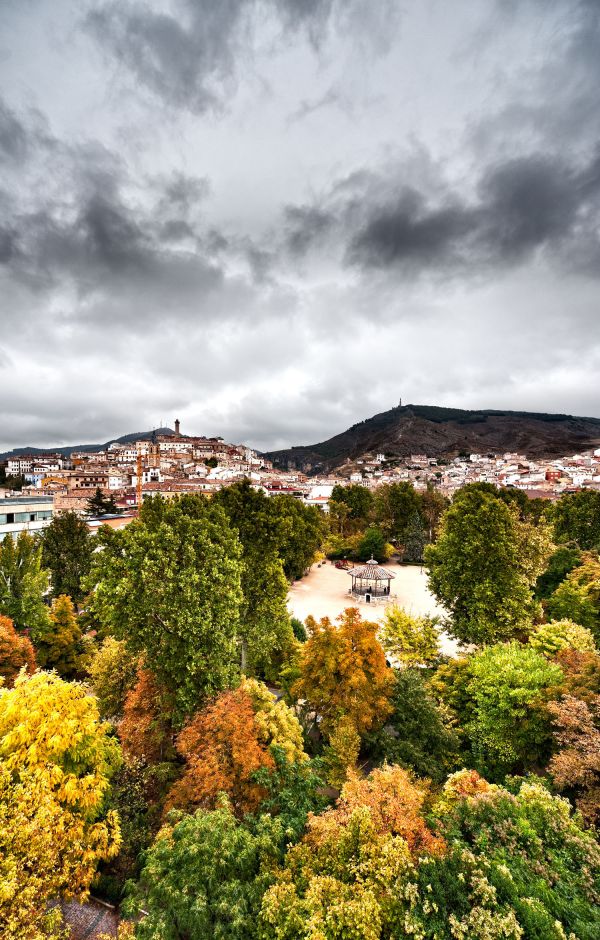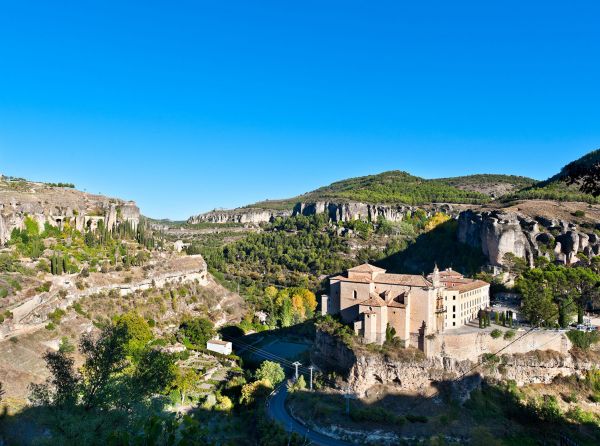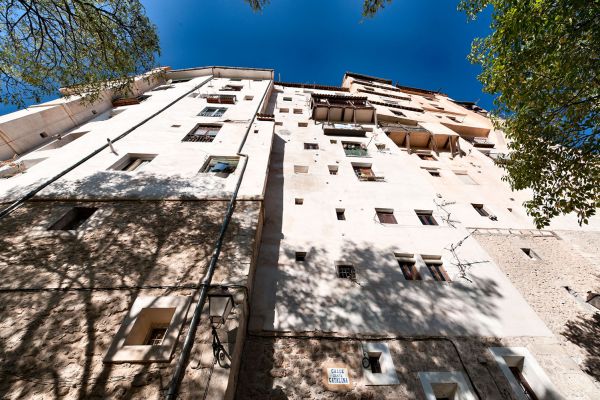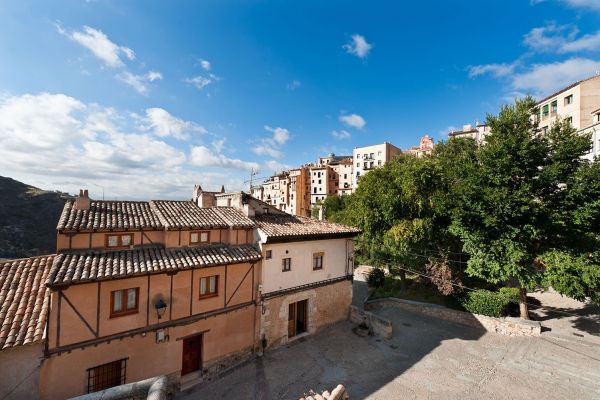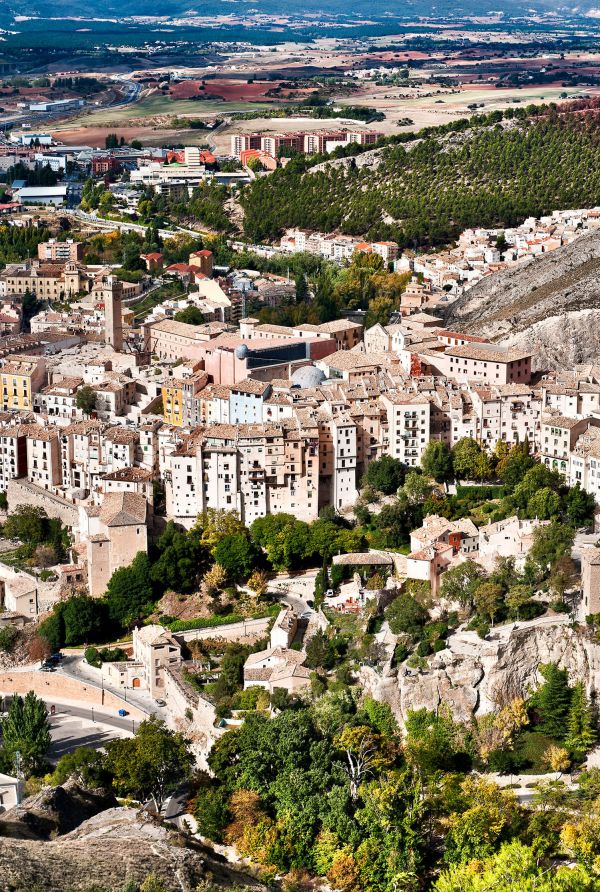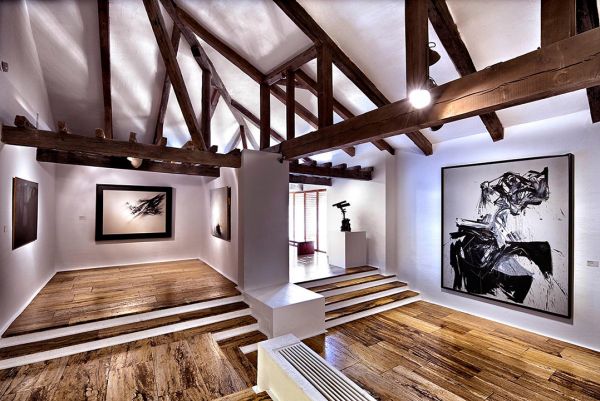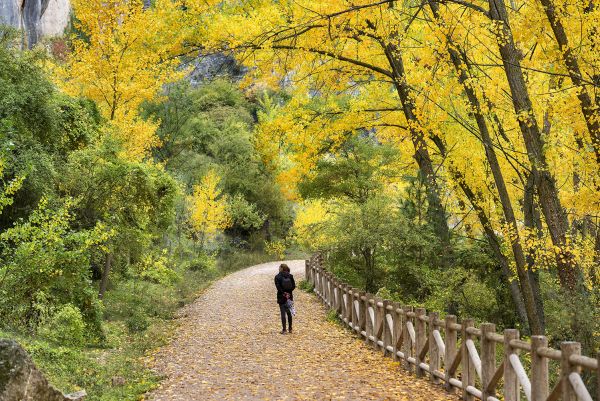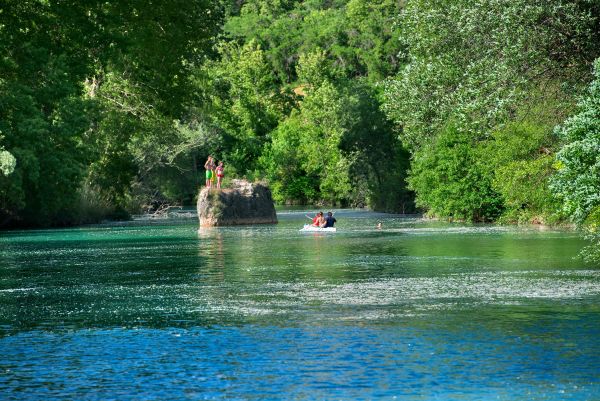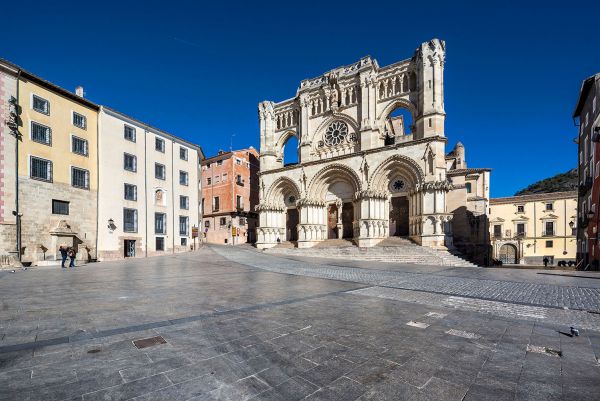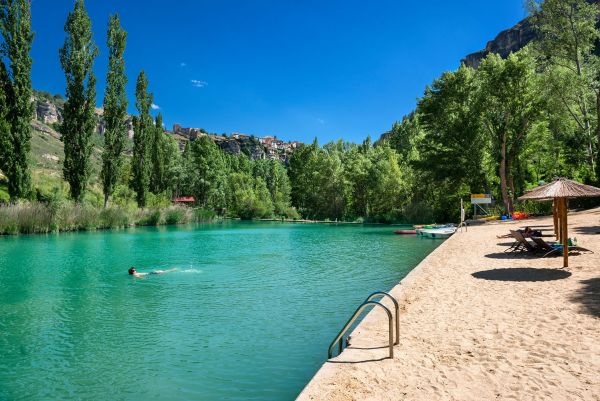Cuenca
Cuenca
History, nature, art, modernity and charm, lots of charm. That’s what lies ahead in Cuenca, the city of light. Declared a World Heritage Site, it is one of Spain’s most beautiful architectural ensembles, which combines its privileged and stunning location with a large chunk of its old town being nestled in the gorges of the Huécar and Júcar rivers.
A great way to start a visit to the city, which 8th century Arabic texts already provide accounts of, is to visit the San Pablo bridge, the dizzying iron walkway that crosses the Huécar river, connecting the Parador Hotel –located in a 16th century monastery– to the rest of the city. The first lights of dawn wash over the Hanging Houses, the church of St. Michael and the hanging urban façade of the rocky outcrop.
We are going to visit the Hanging Houses, one of the most iconic sites in Cuenca. The building has been home to the Spanish Abstract Art Museum for over 50 years, which shouldn’t be missed. Promoted by the Cuenca-resident Gustavo Torner and his friend Fernando Zóbel, there is a fantastic collection of paintings and sculptures by Spanish artists from the abstract generation of the 50s and 60s. In its rooms hang works by internationally renowned Spanish artists such as Eduardo Chillida, Antoni Tapies, Antonio Sempere, Gerardo Rueda, Pablo Serrano, Rafael Canogar or Luis Feito, and the aforementioned Zóbel and Torner.
The Episcopal Palace is nearby, which has a magnificent cloister and is home to the Cathedral Treasure Museum, previously the Diocesan Museum. It contains items of metalwork, tapestries, altars and paintings. The authors include artists such as Juan de Borgoña, Martín Gómez and El Greco.
In the Casa del Curato de San Martín, an example of medieval architecture, a detailed trip through Cuenca history awaits. Archaeological remains from the Palaeolithic to the Middle Ages are housed in the town’s Provincial Museum. A fair number of these come from the Hispanic-Roman cities of Segóbriga, Valeria and Ercávica.
Don’t miss the Main Square, where visitors can marvel at the City’s Baroque arcade, the colourful façades and the Cathedral of Our Lady of Grace, a building showcasing the transition between the Roman and the Gothic, with a clear Norman influence, large windows with abstract, Cubist, surrealist and impressionist stained glass made by contemporary artists such as Gerardo Rueda or Gustav Torner.
Just a few metres from the Main Square lies the Zavala House, the headquarters of the Antonio Saura Foundation, which features a selection of works by this Aragon-born painter who fell in love with Cuenca, and is now a space for promoting contemporary art. One street up, in the old Convent of the Barefoot Carmelite Order, the Antonio Perez Foundation preserves the unique collection that this poet, editor and artist has accumulated over his intense bohemian life dedicated to culture.
Close to the Town Hall, the Museum of the Sciences opens its doors in the Merced Square: a tempting proposal and recommended for kids too; its rooms bring us into contact with astrology, the way our planet was formed and space exploration.
A few metres away, we can visit what used to be the Girón and Cañizares Palace, where the Holy Week Museum opens its doors. Items related to the Easter celebrations, declared a Festival of International Tourist Interest, are exhibited. This is essential for understanding Cuenca culture, as are the festivals of San Julián and San Mateo, or the town’s Religious Music Week, which has been held since 1962.
Cuenca deserves a leisurely visit. Getting lost its in labyrinth of streets and enjoying its alleyways and squares is an exciting adventure. Our stroll will take us past mansions, old palaces, sections of walls, churches, convents, etc. Surprises lie ahead, in the form of the churches of St. Peter, St. Martin, El Salvador, San Antón, St. Michael, St. Nicolas or of the barefoot Franciscans; and convents such as Angélicas, Concepción Franciscana, Petras or Blancas; or the Mangana Tower, whose clock has been telling people from Cuenca the time for centuries.
Outside the historical centre, but well worth a visit, is the Castilla-La Mancha Palaeontological Museum. The star of the show is Pepito, a hunchback dinosaur, known scientifically under the name of Concavenator Corcovatus, located at the Las Hoyas archaeological site. Its rooms showcase life-size reproductions of these enigmatic, attractive animals that dominated Castilla-La Mancha millions of years ago and now return to the lands of Cuenca.
And after soaking up everything the city has to offer, there’s nothing better than visiting the gorges of the Júcar and Huécar river at one of the lookout points next to the abyss; resting at one of the uniquely pretty hotel establishments; or strolling along the natural paths next to the river banks.
May also be of interest to you
Castilla-La Mancha Tourism in 2023. All rights reserved.
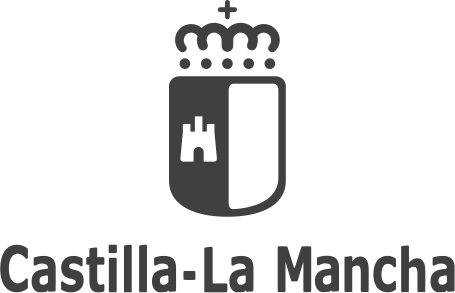
 365
365
